Python Create Folder If Not Exist
In Python, there are multiple ways to create a folder if it doesn’t already exist. This article will guide you through the process of checking if a folder exists, creating a folder, handling exceptions, and using different modules to accomplish this task.
Checking if a folder exists in Python:
Before creating a folder, it is important to check if it already exists to avoid any errors. You can accomplish this task in Python by using the `os` module. The `os.path.exists()` function can be used to check if a folder exists. Here’s an example:
“`python
import os
folder_path = ‘/path/to/folder’
if os.path.exists(folder_path):
print(“Folder already exists”)
else:
print(“Folder doesn’t exist”)
“`
Creating a folder in Python:
To create a folder in Python, you can use the `os` module again. The `os.mkdir()` function allows you to create a directory with the specified path. Here’s an example of creating a folder:
“`python
import os
folder_path = ‘/path/to/new_folder’
os.mkdir(folder_path)
print(“Folder created successfully”)
“`
Handling exceptions when creating a folder:
While creating a folder, there might be exceptions that could occur, such as insufficient permissions or invalid characters in the folder name. To handle these exceptions gracefully, you can use the `try-except` block. Here’s an example:
“`python
import os
folder_path = ‘/path/to/new_folder’
try:
os.mkdir(folder_path)
print(“Folder created successfully”)
except OSError as error:
print(f”Error occurred: {error}”)
“`
Checking if a folder exists and creating it if not:
To combine the checking and creation of a folder, you can use the `os.path.exists()` function along with the `os.mkdir()` function. Here’s an example:
“`python
import os
folder_path = ‘/path/to/new_folder’
if not os.path.exists(folder_path):
os.mkdir(folder_path)
print(“Folder created successfully”)
else:
print(“Folder already exists”)
“`
Using the `os` module to create a folder in Python:
The `os` module provides several functions for file and directory operations. As shown in the above examples, the `os.mkdir()` function is used to create a folder. However, this function will raise an exception if the folder already exists. To avoid this, you can use the `os.makedirs()` function, which creates intermediate directories if they don’t exist. Here’s an example:
“`python
import os
folder_path = ‘/path/to/new_folder’
if not os.path.exists(folder_path):
os.makedirs(folder_path)
print(“Folder created successfully”)
else:
print(“Folder already exists”)
“`
Using the `pathlib` module to create a folder in Python:
The `pathlib` module was introduced in Python3 to provide a more intuitive and object-oriented way of working with file paths. You can use the `Path.mkdir()` method from this module to create a folder. Here’s an example:
“`python
from pathlib import Path
folder_path = Path(‘/path/to/new_folder’)
if not folder_path.exists():
folder_path.mkdir(parents=True)
print(“Folder created successfully”)
else:
print(“Folder already exists”)
“`
Best practices for creating folders in Python:
1. Use `os.makedirs()` or `Path.mkdir()` instead of `os.mkdir()` for creating folders, as they create intermediate directories if necessary.
2. Always check if the folder already exists before creating it to avoid any errors or overwriting existing directories.
3. Use the `try-except` block to handle exceptions gracefully while creating folders.
4. Ensure that the provided folder paths have the correct permissions and do not contain invalid characters.
5. Use the appropriate module (`os` or `pathlib`) based on your preference and the Python version you are using.
FAQs:
Q: What happens if I try to create a folder that already exists?
A: If you use `os.mkdir()` to create a folder that already exists, it will raise a `FileExistsError` exception. To avoid this, you can use `os.makedirs()` or `Path.mkdir()`.
Q: How can I create a folder and its parent directories if they don’t exist?
A: You can use `os.makedirs()` or `Path.mkdir()` with the `parents=True` argument to create a folder and its parent directories if they don’t already exist.
Q: Is it possible to create a folder with a path that contains spaces or special characters?
A: Yes, you can create folders with paths that contain spaces or special characters as long as the provided path is valid and has the appropriate permissions.
Q: Can I create multiple folders at once using Python?
A: Yes, you can create multiple folders at once by specifying multiple paths in the `os.makedirs()` or `Path.mkdir()` function. Separate the paths with commas.
Q: How can I check if a directory exists and create it if it doesn’t, without printing any messages?
A: You can remove the `print()` statements from the code examples provided and use the code to simply check if a directory exists and create it if it doesn’t.
Create Directory If Not Exist In Python 😀
Which Files Create Directory If Not Exist?
When working with various programming languages and file systems, it is important to understand the behavior of different functions and methods when dealing with directories. One common task developers encounter is creating a directory if it does not already exist. In this article, we will explore different files that can be used to create a directory if it does not exist, including insights into their usage, advantages, and limitations.
1. mkdir() in Python
Python provides a built-in function called mkdir() that can be used to create a directory if it does not already exist. This function belongs to the os module, which provides a way to interact with the operating system. By passing the desired directory path as an argument to the mkdir() function, it creates the directory. If the directory already exists, it throws an error. To avoid this, an additional check can be performed to verify its existence before calling mkdir().
2. fs.mkdir() in Node.js
Similarly, Node.js provides a method called mkdir() through the FileSystem (fs) module. This method allows developers to create a directory at a specified path if it does not already exist. If the directory already exists, it throws an error. Just like in Python, a conditional check can be performed before calling the mkdir() method to avoid any errors.
3. FileUtils.forceMkdir() in Apache Commons IO (Java)
For Java developers, the Apache Commons IO library provides a class called FileUtils, which offers a helpful method called forceMkdir() to create a directory if it does not exist. Unlike the previous examples, this method does not throw an exception if the directory already exists. Instead, it silently continues without making any changes. This can be advantageous in scenarios where the code needs to ensure that the directory exists, but it is not necessary to recreate it every time.
4. Directory.CreateDirectory() in C#
In C#, the System.IO namespace provides a class called Directory, which includes a static method called CreateDirectory() that allows developers to create a directory if it does not already exist. If the directory already exists, it silently continues without throwing an error. This method simplifies the process of creating directories in C#, reducing the amount of boilerplate code required.
5. pathlib.Path.mkdir() in Python
Python’s pathlib module offers an object-oriented approach to working with file system paths. It provides the Path class, which includes a mkdir() method that can be called on a Path instance to create a directory if it does not already exist. This method behaves similar to Python’s mkdir(), throwing an error if the directory already exists. However, it simplifies usage by allowing directory creation with a more object-oriented syntax.
FAQs:
Q: What happens if a directory already exists when using these methods?
A: The behavior varies across programming languages and libraries. Some methods, like mkdir() in Python and fs.mkdir() in Node.js, will throw an error when trying to create an existing directory. Others, like FileUtils.forceMkdir() in Apache Commons IO (Java) and Directory.CreateDirectory() in C#, will silently continue without making any changes.
Q: Is there a way to check if a directory exists before creating it?
A: Yes, in most programming languages, there are methods or functions available to check if a directory exists before attempting to create it. For example, in Python, you can use the os.path.exists() function to verify the existence of a directory.
Q: Can these methods create nested directories?
A: Yes, all the mentioned methods support creating nested directories. You can specify the desired path, including the directory hierarchy, and the methods will create all necessary parent directories if they do not already exist.
Q: Are there any limitations or restrictions when creating directories?
A: While creating directories programmatically is generally straightforward, there may be limitations or restrictions depending on the operating system, file system, or user permissions. It is important to consider these factors and handle any potential errors or exceptions gracefully.
In conclusion, there are several methods and functions available in different programming languages and libraries to create directories if they do not already exist. Understanding the behavior and syntax of these methods is essential for efficiently managing file system operations in various programming environments. By utilizing these techniques, developers can handle directory creation with ease, ensuring the smooth execution of their programs.
How To Check If A Directory Exists If Not Create It In Python?
In Python, there may be scenarios where you need to check if a directory exists and create it if it does not. This can be particularly useful when developing applications that require specific directories to store files or when dealing with file management tasks. Fortunately, Python provides a simple and efficient way to accomplish this. In this article, we will explore various methods to check if a directory exists and, if not, create it using Python.
Method 1: os.path.exists()
One of the most straightforward approaches to check if a directory exists is by using the os.path.exists() method. This method evaluates whether a given path exists. To use this method, you will need to import the os module. Here’s an example:
“`python
import os
directory = “/path/to/directory”
if os.path.exists(directory):
print(“Directory already exists!”)
else:
os.makedirs(directory)
print(“Directory created successfully!”)
“`
In this example, we first define the variable `directory` with the desired path. We then use the `os.path.exists()` method to check if the directory already exists. If the directory exists, the program will print “Directory already exists!” Otherwise, we can create the directory using the `os.makedirs()` method, followed by printing “Directory created successfully!”.
Method 2: os.path.isdir()
Another useful method provided by the `os` module is `os.path.isdir()`. Unlike the `os.path.exists()` method, `os.path.isdir()` specifically checks if the provided path is a directory. Here’s an example:
“`python
import os
directory = “/path/to/directory”
if os.path.isdir(directory):
print(“Directory already exists!”)
else:
os.makedirs(directory)
print(“Directory created successfully!”)
“`
Similarly to the previous method, if the directory exists, the program will print “Directory already exists!”. If the directory does not exist, it will be created using the `os.makedirs()` method, followed by printing “Directory created successfully!”.
Method 3: pathlib.Path()
Python’s `pathlib` module provides an object-oriented approach to handle paths and directories. We can use the `Path()` method to create a `Path` object and then check if a directory exists using its `exists()` method. Here’s an example:
“`python
from pathlib import Path
directory = Path(“/path/to/directory”)
if directory.exists():
print(“Directory already exists!”)
else:
directory.mkdir(parents=True, exist_ok=True)
print(“Directory created successfully!”)
“`
In this example, we create a `Path` object `directory` with the desired path. We then use the `exists()` method to check if the directory already exists. If it exists, the program will print “Directory already exists!”. If not, we can create the directory using the `mkdir()` method with the `parents=True` and `exist_ok=True` arguments, followed by printing “Directory created successfully!”.
Frequently Asked Questions (FAQs):
Q1: Can I check if a directory exists in a different drive using these methods?
A1: Yes, you can check if a directory exists in a different drive provided that you specify the correct path to that drive.
Q2: How can I create multiple directories at once?
A2: To create multiple directories using the `os.makedirs()` method, you can pass a full path with multiple directory names separated by slashes. For example:
“`python
import os
directory = “/path/to/parent/directory/subdirectory”
if os.path.exists(directory):
print(“Directory already exists!”)
else:
os.makedirs(directory)
print(“Directory created successfully!”)
“`
This will create both the parent directory and the subdirectory.
Q3: What’s the difference between `os.makedirs()` and `os.mkdir()`?
A3: The `os.makedirs()` function creates all the intermediate directories if they do not exist, whereas `os.mkdir()` only creates the final directory specified in the path.
Q4: Can I use these methods to check if a file exists?
A4: No, these methods specifically check if a directory exists. To check if a file exists, you can use `os.path.isfile()` or `pathlib.Path().is_file()`.
In conclusion, Python provides several methods to check if a directory exists, and if not, create it. These methods, such as `os.path.exists()`, `os.path.isdir()`, and `pathlib.Path().exists()`, allow you to easily handle directory management within your Python programs. By employing these techniques intelligently, you can efficiently ensure that necessary directories are in place, enhancing the robustness and reliability of your code.
Keywords searched by users: python create folder if not exist Os mkdir if not exists, Python create file if not exists, Path mkdir if not exists, Create folder Python, Python check directory exists if not create, Python copy file auto create directory if not exist, Create folder if it doesn t exist Python, Os mkdir exist ok
Categories: Top 55 Python Create Folder If Not Exist
See more here: nhanvietluanvan.com
Os Mkdir If Not Exists
Introduction:
In Python, the os.mkdir() function is used to create directories, or folders, programmatically. It allows developers to quickly and conveniently create new directories to organize their files and resources. However, there may be instances where it is necessary to check if a directory already exists or not before creating it. This is where the ‘if not exists’ condition comes into play with os.mkdir(). In this article, we will explore the concept of os.mkdir() with ‘if not exists’ in detail, along with practical examples and a FAQs section at the end.
Understanding os.mkdir() and the ‘if not exists’ Condition:
The os.mkdir() function is part of the built-in ‘os’ module in Python. It takes a single argument, which is the desired path for creating a new directory. By default, os.mkdir() will raise a FileExistsError if a directory with the same name already exists. However, to bypass this error, we can use the ‘if not exists’ condition.
Using ‘if not exists’ with os.mkdir() allows us to check if a directory already exists before creating it. If the directory is already present, the function simply moves on without raising an error; otherwise, it creates the specified directory. This condition ensures that the program doesn’t attempt to create a directory that’s already there, thereby preventing potential errors or overwriting of existing directories.
Example Usage:
Let’s delve into some code examples to illustrate the working of os.mkdir() with the ‘if not exists’ condition:
“`
import os
directory = “new_directory”
if not os.path.exists(directory):
os.mkdir(directory)
print(“Directory created successfully!”)
else:
print(“Directory already exists!”)
“`
In the above example, we first define the directory name as “new_directory”. The os.path.exists() function checks if the directory already exists. If it doesn’t exist, the ‘if’ condition within the code block is satisfied, and os.mkdir() is called to create the directory. On the other hand, if the directory already exists, the else block will execute, and a message will be printed indicating that the directory already exists.
FAQs about os.mkdir() with ‘if not exists’:
1. What happens if os.mkdir() encounters a directory creation failure?
If os.mkdir() fails to create a directory due to insufficient permissions or any other issues, it raises a PermissionError or OSError, respectively. To handle such exceptions, you can wrap the os.mkdir() call within a try-except block.
2. Does os.mkdir() create nested directories?
No, os.mkdir() creates a single directory specified by the given path. If you need to create nested directories, you can either use the os.makedirs() function or manually create each directory in the desired hierarchy.
3. Can I create multiple directories simultaneously with os.mkdir()?
No, os.mkdir() can only create one directory at a time. If you wish to create multiple directories, you will need to call os.mkdir() multiple times with different paths.
4. How do I ensure portable directory creation across different operating systems?
To ensure compatibility and portability across different operating systems, use the os.path.join() function to construct the directory path components. This function automatically adjusts the path delimiter based on the operating system it is executed on.
Conclusion:
The os.mkdir() function, along with the ‘if not exists’ condition, provides a powerful mechanism for creating directories in a Python program. By checking if a directory exists before attempting to create it, we can avoid errors and manage our files more effectively. Remember to handle any exceptions that may occur during directory creation to ensure smooth execution. With the knowledge gained from this comprehensive guide, you can confidently utilize os.mkdir() with ‘if not exists’ in your Python projects.
Python Create File If Not Exists
Creating a file in Python is a straightforward process. However, before diving into the code, it is important to understand the requirements and potential scenarios. It is common to create a file only if it does not already exist. This requirement saves time and resources, particularly in cases where the file might be modified or accessed frequently.
When it comes to file creation in Python, there are multiple approaches. We will discuss two commonly used methods for accomplishing this task.
Method 1: Using the `os` module
The `os` module provides various functions for interacting with the operating system. To create a file, we can utilize the `os.path` module in conjunction with the `os` module to check if a file already exists. Here is an example of how you can do this:
“`python
import os
if not os.path.exists(“example.txt”):
with open(“example.txt”, “w”) as file:
# Perform any necessary operations on the file
file.write(“Hello, World!”)
“`
In this code snippet, the `os.path.exists()` function checks if the file “example.txt” exists in the current directory. If the file does not exist, the code creates it using the `open()` function with the “w” mode (denoting write mode). You can replace “example.txt” with the desired file name, and perform any necessary operations inside the `with` block.
Method 2: Using the `pathlib` module
The `pathlib` module was introduced in Python 3.4, and it provides an object-oriented approach for working with file paths. Here is an example of how you can create a file if it does not exist using the `pathlib` module:
“`python
from pathlib import Path
file_path = Path(“example.txt”)
if not file_path.exists():
with open(file_path, “w”) as file:
# Perform any necessary operations on the file
file.write(“Hello, World!”)
“`
In this code snippet, we create a `Path` object with the file name “example.txt”. The `exists()` method checks if the file exists, and if not, we proceed to create it using `open()`.
Frequently Asked Questions (FAQs):
Q1. What happens if I attempt to create a file that already exists?
If you try to create a file using either of the above methods and the file already exists, a new blank file will be created, replacing the existing file. To avoid overwriting existing files, it is crucial to incorporate appropriate error handling mechanisms in your code.
Q2. Can I specify a file path while creating a file?
Yes, both the `os.path` and `pathlib` modules allow you to specify a file path while creating a file. For example, you can use `os.path.exists(“path/to/example.txt”)` or `Path(“path/to/example.txt”).exists()` to create a file in a specific directory.
Q3. Is it possible to create multiple directories along with the file using `pathlib`?
Yes, `pathlib` enables you to not only create a file but also create directories if they do not exist. For instance, you can use the `Path(“path/to/new/directory/example.txt”)` statement, and it will create the necessary directories if they are missing.
Q4. How can I handle exceptions while creating a file?
To handle exceptions while creating a file, you can use try-except blocks. In case of an exception, such as insufficient permissions or disk space, you can log the error, display a user-friendly message, or perform alternative actions.
Q5. Are there any limitations in terms of file types or file sizes when using these methods?
No, the methods discussed in this article can be used to create any type of file and do not impose any limitations on file sizes. However, keep in mind the constraints of the operating system and the available storage space.
In conclusion, Python provides flexible and convenient ways to create a file only if it does not already exist. By utilizing the `os.path` or `pathlib` modules, developers can effortlessly handle file creation scenarios. Understanding these methods and their respective advantages can greatly enhance productivity and efficiency while working with files in Python.
Images related to the topic python create folder if not exist

Found 48 images related to python create folder if not exist theme
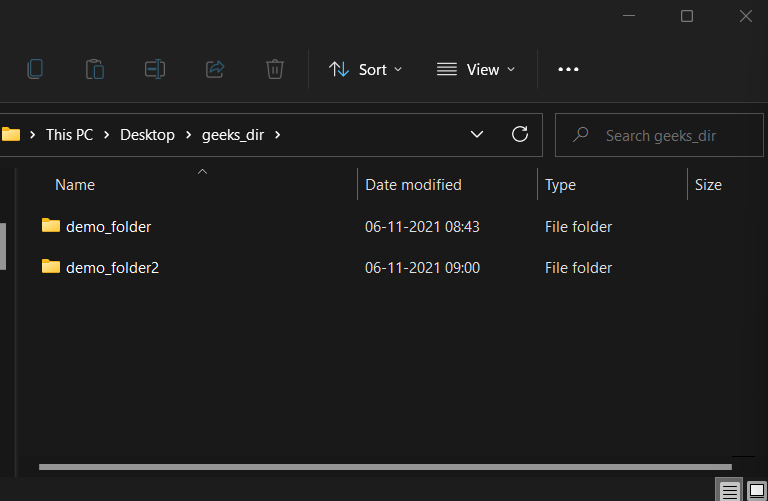



![Solved: Node.js create directory if doesn't exist [Examples] | GoLinuxCloud Solved: Node.Js Create Directory If Doesn'T Exist [Examples] | Golinuxcloud](https://www.golinuxcloud.com/wp-content/uploads/output-2.png)

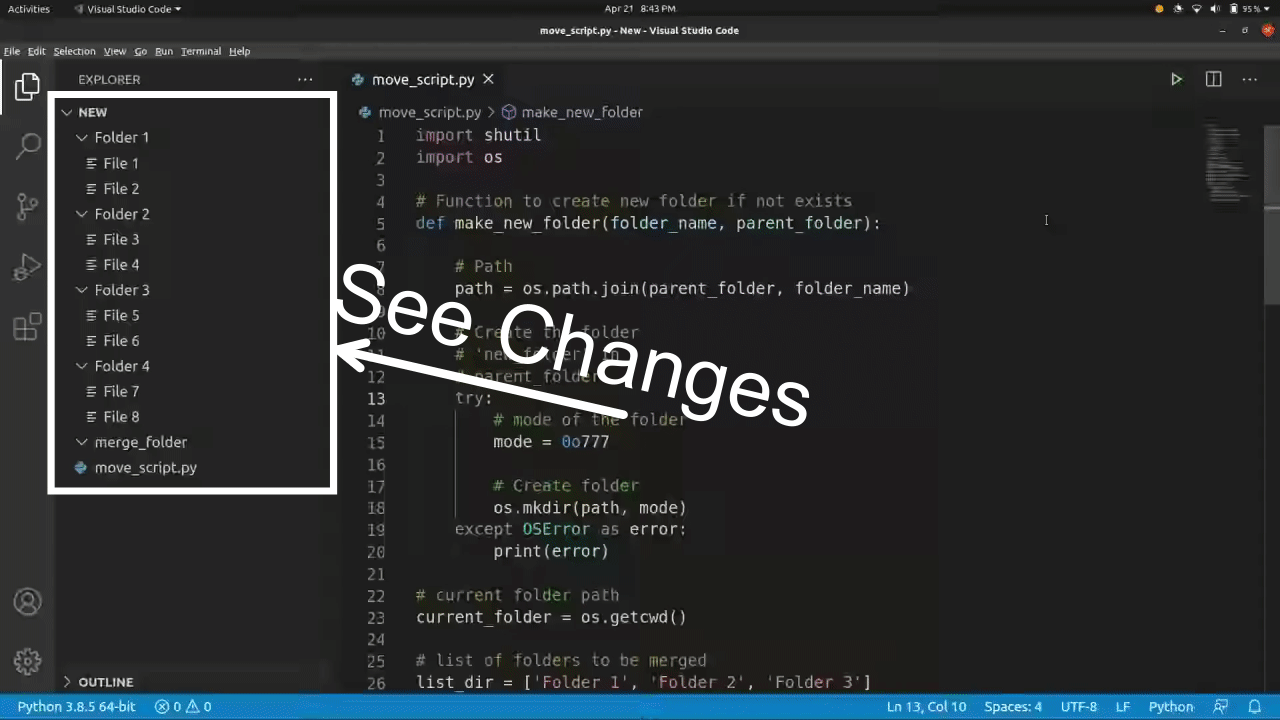



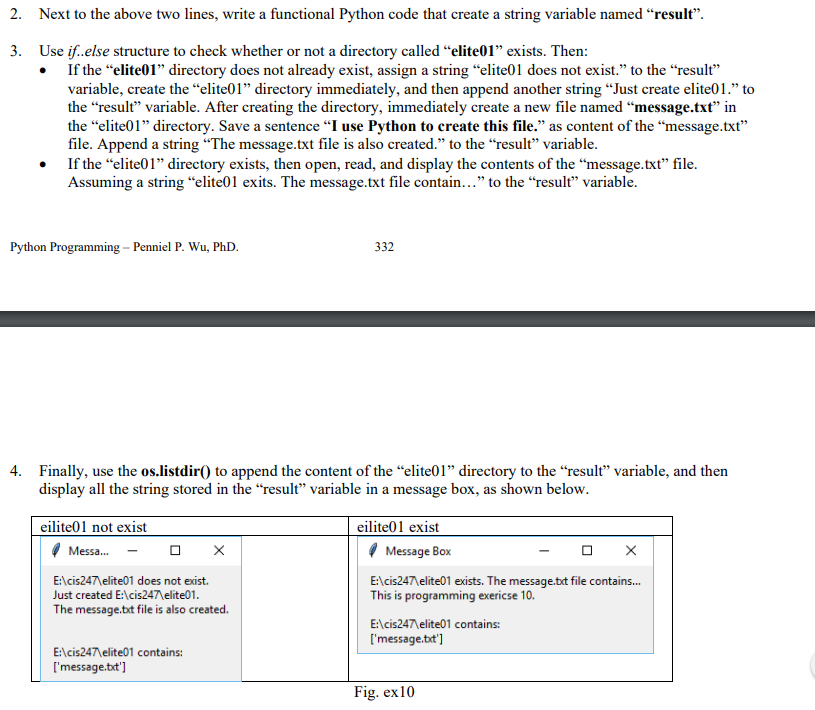





![Solved: Node.js create directory if doesn't exist [Examples] | GoLinuxCloud Solved: Node.Js Create Directory If Doesn'T Exist [Examples] | Golinuxcloud](https://www.golinuxcloud.com/wp-content/uploads/all-fs-methods-1.png)

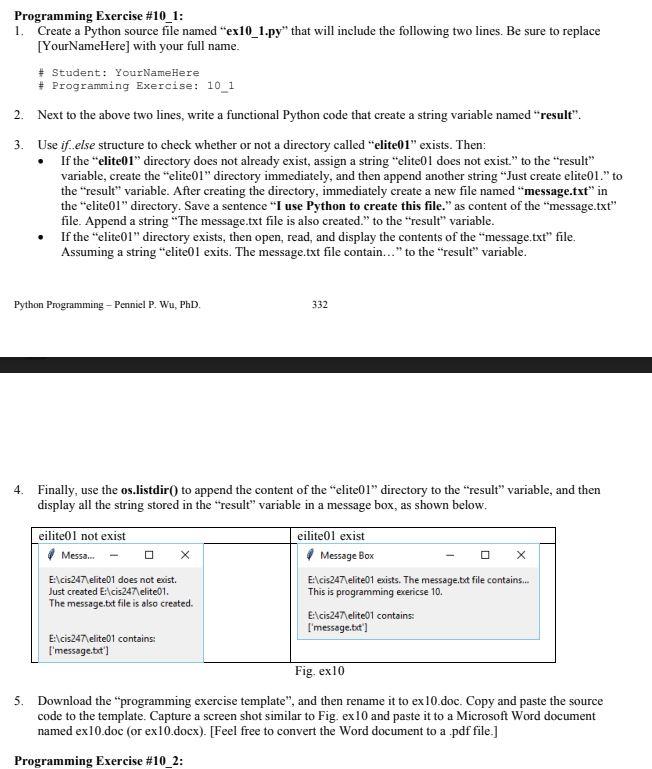











![FileExistsError: [Errno 17] File exists in Python [Solved] | bobbyhadz Fileexistserror: [Errno 17] File Exists In Python [Solved] | Bobbyhadz](https://bobbyhadz.com/images/blog/python-fileexistserror-errno-17-file-exists/directory-already-exists.webp)



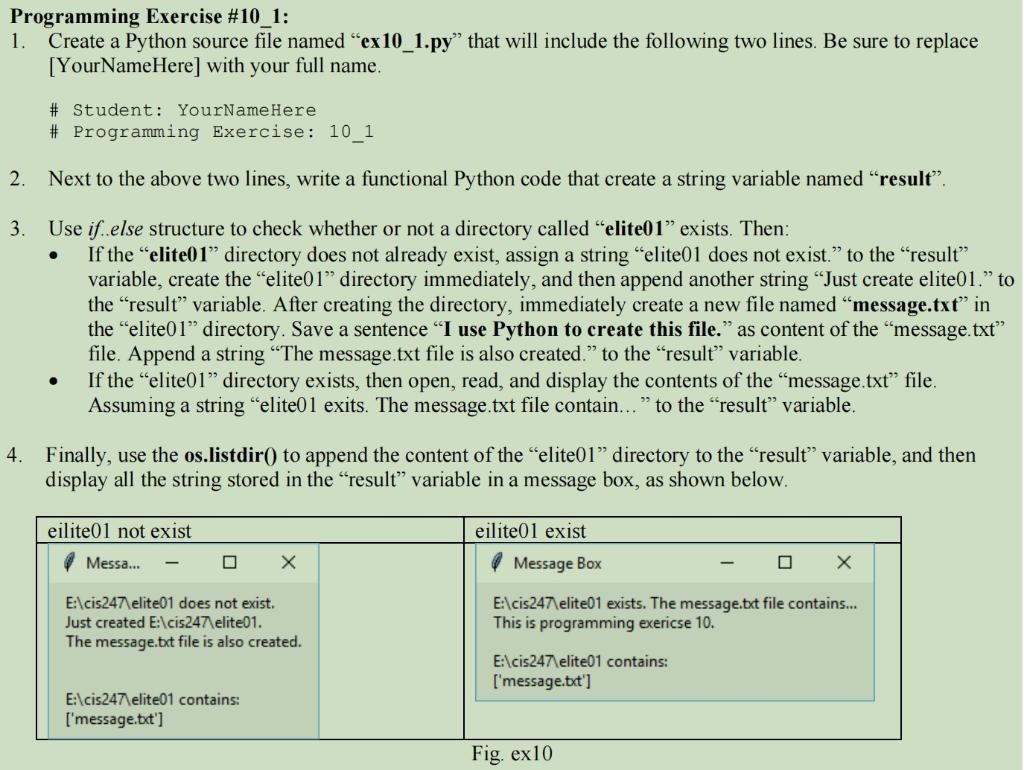






![Solved: Node.js create directory if doesn't exist [Examples] | GoLinuxCloud Solved: Node.Js Create Directory If Doesn'T Exist [Examples] | Golinuxcloud](https://www.golinuxcloud.com/wp-content/uploads/recursive-directory-creation.png)


![bug]: yarn create @magento/pwa stuck at first question on Windows · Issue #2342 · magento/pwa-studio · GitHub Bug]: Yarn Create @Magento/Pwa Stuck At First Question On Windows · Issue #2342 · Magento/Pwa-Studio · Github](https://user-images.githubusercontent.com/12669886/79643555-f146b880-81bc-11ea-90b6-9f72a5d74c94.png)


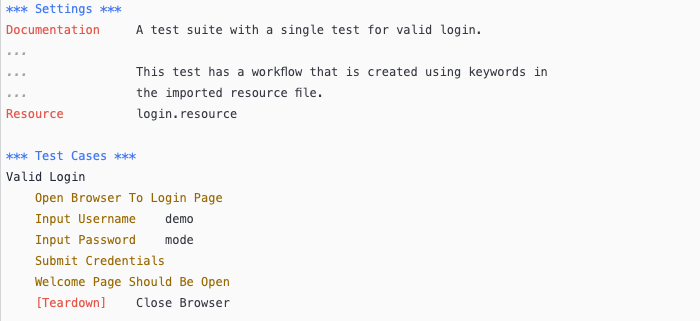
Article link: python create folder if not exist.
Learn more about the topic python create folder if not exist.
- How can I create a directory if it does not exist using Python
- How to Create Directory If Not Exists in Python – AppDividend
- How do I create a directory, and any missing parent directories?
- How to Create Directory If it Does Not Exist using Python?
- Create a directory if it does not exist and then create the files in that …
- Python: Check if a File or Directory Exists – GeeksforGeeks
- Python Check if File Exists: How to Check if a Directory Exists?
- How can I create a directory in Python using ‘mkdir if not exists’?
- Python: Create a Directory if it Doesn’t Exist – Datagy
- Creating a Directory in Python – How to Create a Folder
- How To Create a Directory If Not Exist In Python – pythonpip.com
- How to check if a file or directory exists in Python
- Create a directory with mkdir(), makedirs() in Python – nkmk note
See more: nhanvietluanvan.com/luat-hoc